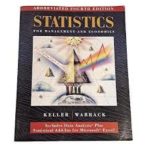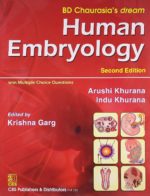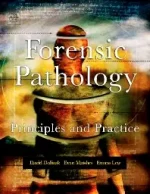-
Malcolm X: A Life of Reinvention Paperback
KSh 650.00Hailed as “a masterpiece” (San Francisco Chronicle), Manning Marable’s acclaimed biography of Malcolm X finally does justice to one of the most influential and controversial figures of twentieth-century American history. Filled with startling new information and shocking revelations, Malcolm X unfolds a sweeping story of race and class in America. Reaching into Malcolm’s troubled youth, it traces a path from his parents’ activism as followers of Marcus Garvey through his own work with the Nation of Islam and rise in the world of black nationalism, and culminates in the never-before-told true story of his assassination. Malcolm X is a stunning achievement, the definitive work on one of our greatest advocates for social change.
-
STATISTICS FOR MANAGEMENT AND ECONOMICS
STATISTICS FOR MANAGEMENT AND ECONOMICS, Tenth Edition, emphasizes applications over calculation. It illustrates how vital statistical methods and tools are
-
Fallen in Love
KSh 500.00And in a twist of fate, four extraordinary love stories intersect over the course of a romantic Valentine’s Day in medieval England. Miles and Shelby find love where they least expect it. Roland learns a painful lesson about finding and losing love. Arriane pays the price for a love so fierce it burns. And for the first—and last—time, Daniel and Luce spend a night together like none other.
Lauren Kate’s FALLEN IN LOVE is filled with love stories . . . the ones everyone has been waiting for.
-
The Mission Song-John Le Caree
KSh 400.00Bruno Salvador, known to friends and enemies alike as Salvo, is the ever-innocent, twenty-nine-year-old orphaned love-child of a Catholic Irish missionary and a Congolese headman’s daughter. Educated first at mission school in the East Congolese province of Kivu, and later at a discreet sanctuary for the secret sons of Rome, Salvo is inspired by his mentor Brother Michael to train as a professional interpreter in the minority African languages of which, almost from birth, he has been an obsessive collector.
Soon a rising star in his profession, he is courted by City corporations, hospitals, law courts, the Immigration services and – inevitably – the mushrooming overworld of British Intelligence. He is also courted – and won – by the all-white, Surrey-born Penelope, star reporter on one of our great national newspapers, whom with typical impulsiveness he promptly marries. Yet even as the story opens, a contrary and irresistible love is dawning in him.
Despatched to a no-name island in the North Sea to attend a top-secret meeting between Western financiers and East Congolese warlords, Salvo is obliged to interpret matters never intended for his re-awoken African conscience.
-
Jet-Set Summer Affairs
KSh 400.00Three decadent, glamorous romances with three seriously sexy alpha males provide the perfect summer escape! Surrendering to a smouldering Sardinian…Widowed Sasha is shocked to learn that millionaire Gabriel is named as her late husband’s heir and guardian to her sons. Already at his mercy, could a summer together convince her to surrender to his will? Red-hot nights in Rio…Kimberly and Brazilian billionaire Luc once shared a steamy summer together. Now their son is in danger, and Kimberly returns to Brazil for Luc’s help. Yet wary Luc has one condition – she must sleep with him first! One gorgeous man, several exclusive globetrotting dates…From the moment Slade Carruthers lays eyes on the beautiful Clea Chardin, he has to have her. But Clea has a reputation and Slade doesn’t share his women. So begins a jet-set seduction that has Slade pursuing Clea across the globe – and into his bed! Sun, sea and champagne…the perfect ingredients for a jet-set summer affair!
KSh 650.00 -
The $100 Startup: Reinvent the Way You Make a Living, Do What You Love, and Create a New Future
KSh 1,495.00“Thoughtful, funny, and compulsively readable, this guide shows how ordinary people can build solid livings, with independence and purpose, on their own terms.”—Gretchen Rubin, author of the #1 New York Times bestseller The Happiness Project
Still in his early thirties, Chris Guillebeau completed a tour of every country on earth and yet he’s never held a “real job” or earned a regular paycheck. Rather, he has a special genius for turning ideas into income, and he uses what he earns both to support his life of adventure and to give back.
Chris identified 1,500 individuals who have built businesses earning $50,000 or more from a modest investment (in many cases, $100 or less), and focused on the 50 most intriguing case studies. In nearly all cases, people with no special skills discovered aspects of their personal passions that could be monetized, and were able to restructure their lives in ways that gave them greater freedom and fulfillment.
Here, finally, distilled into one easy-to-use guide, are the most valuable lessons from those who’ve learned how to turn what they do into a gateway to self-fulfillment. It’s all about finding the intersection between your “expertise”—even if you don’t consider it such—and what other people will pay for. You don’t need an MBA, a business plan or even employees. All you need is a product or service that springs from what you love to do anyway, people willing to pay, and a way to get paid.
Not content to talk in generalities, Chris tells you exactly how many dollars his group of unexpected entrepreneurs required to get their projects up and running; what these individuals did in the first weeks and months to generate significant cash; some of the key mistakes they made along the way, and the crucial insights that made the business stick. Among Chris’s key principles: If you’re good at one thing, you’re probably good at something else; never teach a man to fish—sell him the fish instead; and in the battle between planning and action, action wins.
In ancient times, people who were dissatisfied with their lives dreamed of finding magic lamps, buried treasure, or streets paved with gold. Today, we know that it’s up to us to change our lives. And the best part is, if we change our own life, we can help others change theirs. This remarkable book will start you on your way.
-
Sign Language: My First 100 Words
KSh 1,600.00A fresh new beginner’s guide to American Sign Language–with a poster of the sign language alphabet!
Featuring cool computer-generated illustrations and a simple kid-friendly design, this reference book for the youngest readers makes learning sign language fun and easy! Learn 100 basic signs for everyday use in helpful categories, such as Food, Colors, Animals, In the Classroom, and more! Also included are instructions on how to fingerspell the entire alphabet and numbers.
For quick reference, this book also comes with a bonus full-size poster of the ASL alphabet–perfect for home or the classroom!
-
Clariel – Softcover
KSh 1,295.00The highly anticipated and long-awaited prequel to Garth Nix’s astonishingly successful OLD KINGDOM series Sixteen-year-old Clariel is not adjusting well to her new life in the city of Belisaere, the capital of the Old Kingdom. She misses roaming freely within the forests of Estwael, and she feels trapped within the stone city walls. And in Belisaere she is forced to follow the plans, plots and demands of everyone, from her parents to her maid, to the sinister Guildmaster Kilip. Clariel can see her freedom slipping away. It seems too that the city itself is descending into chaos, as the ancient rules binding Abhorsen, King and Clayr appear to be disintegrating. With the discovery of a dangerous Free Magic creature loose in the city, Clariel is given the chance both to prove her worth and make her escape. But events spin rapidly out of control. Clariel finds herself more trapped than ever, until help comes from an unlikely source. But the help comes at a terrible cost. Clariel must question the motivations and secret hearts of everyone around her – and it is herself she must question most of all.
-
Human Embryology, 2E (Bd Chaurasia’s Dream)-by Khurana Arushi (Author), Indu Khurana (Author)
Explore Human Embryology, 2nd Edition (Bd Chaurasia’s Dream Series) — a comprehensive guide to human development from conception to birth. This updated edition offers clear explanations, detailed illustrations, and clinically relevant insights, making it an essential textbook for medical and nursing students.
The book presents a comprehensive coverage of the prenatal development of human body. The text is organized into three sections covering general embryology systemic embryology and applied embryology. The salient feature of this book are : Provides an exhaustive and thorough exposition of human embryology. Includes more than 600 diagrams to provide an in-depth understanding of the subject.Highlights the clinical correlates of normal human development and various congenital anomalies.Chapter organization style makes it possible to conceptualize and reproduce the complex matter in a simple and easy way.Attractive color format enhances the lucidity. Written with full dedication and missionary zeal to pay homage to Dr BO Chaurasia and to fullfill his unrealized dream.Edited with a passion by an experienced and renowned teacher and author/editor of several books in anatomy. All these features make this an indispensable textbook for medical and dental students.
-
Forensic Pathology Principles and Practice
KSh 60,000.00Forensic Pathology is a comprehensive reference that uses a case-oriented format to address, explain and guide the reader through the varied topics encountered by forensic pathologists. Developed in response to a severe void in the literature, the book addresses topics ranging from medicolegal investigation of death to death scene investigation, forensic autopsy, and artifacts of resuscitation as well as complications of medical therapy, forensic osteology, forensic odontology, forensic photography, and death certification. The book includes various types of cases, including sudden natural death, asphyxia, motor vehicle collisions, death in custody, child abuse and elder abuse, acute psychiatric and emotional deaths, and pregnancy. It contains sample descriptions of pathological lesions which serve to aid pathologists in reporting their findings to law enforcement agencies, attorneys, and others involved in investigations of sudden death. The concepts outlined in the text are beautifully illustrated by large, colorful photographs. There are also “Do and Don’t” sections at the end of each chapter that provide guidance for handling the types of cases examined. This work will benefit not only experienced forensic pathologists, but also hospital pathologists who occasionally performs medicolegal autopsies; doctors in training; medical examiners; law enforcement personnel; crime scene investigators; attorneys; and fellows and students of the medical sciences.










